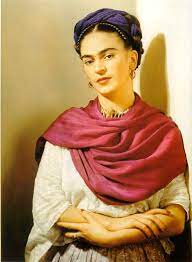Calentamiento: Adjetivos
Adjectives/Adjetivos
Feminine forms
- Adjectives ending in o in the masculine end in a in the feminine.
- Most other adjectives have identical masculine and feminine forms. Ejemplo: un amigo simpático, popular, inteligente y cortés. Una amiga simpática, popular, inteligente y cortés.
- Adjectives ending in or, án, ón, end in ora, ana, ona. Ejemplo: El estudiante es trabajador. No es holgazán (lazy). La estudiante es trabajadora. No es holgazana.
- BUT: “Mayor”, “menor”, “mejor”, “superior” remain the same in the feminine. Ejemplo: Mi hermana mayor. Mi hermano menor.
- Most adjectives of nationality end in a in the feminine. Ejemplo: Un doctor español una doctora española. Un artista francés una artista francesa.
- BUT: un periodista israelí. Una periodista israelí.
Plural forms
- Plural adjectives are formed according to the same patterns as plural nouns. Ejemplo: un estudiante serio e inteligente unos estudiantes serios e inteligentes.
Position
- Adjectives of description usually come after the noun they modify. Ejemplo: Luisa es una estudiante mexicana.
- The masculine singular adjectives bueno, malo, primero and tercero, become buen, mal, primer, and tercer when used before a noun. Ejemplo: un artista bueno, un buen artista. Un estudiante malo, un mal estudiante.
- The adjective grande becomes gran before a singular noun (masculine or feminine). Ejemplo: un gran problema
- Una gran reunión
- A few adjectives have two different meanings depending on whether they are used before or after the noun they modify. Ejemplo: una ciudad grande (a large city)
- Una gran ciudad (a great city)
- El hombre pobre (the poor man)
- El pobre hombre (unfortunate man)
- Una amiga vieja (an old friend)
- Una vieja amiga (of long lasting friend)
Let’s practice!
Who Am I?/Quién soy yo?
- Each student receives a secret identity card taped to their back by the Professor. The identity may be an illustration or a picture of a famous person.
- Students must wander around the room asking yes/no questions (in Spanish and using adjectives) to their classmates in order to determine their secret identity.
- You may only ask up to five questions in Spanish per student. For example, ¿soy guapo? ¿soy chino? = Am I handsome? Am I Chinese? (Professor will give you a handout with popular questions to help you guess)
- If you guess the correct celebrity, go up to your Professor and say the name of your celebrity and use two adjectives that describe him or her. Por ejemplo: Yo soy Dora la exploradora!
Let’s do it again!
Actividad 2
- Please describe the following images of famous Hispanics using 3 adjectives for their description.
- Por ejemplo: María es alta, bonita y es cantante.



Elmo

Actividad 3
Please identify the adjectives in each sentence.
